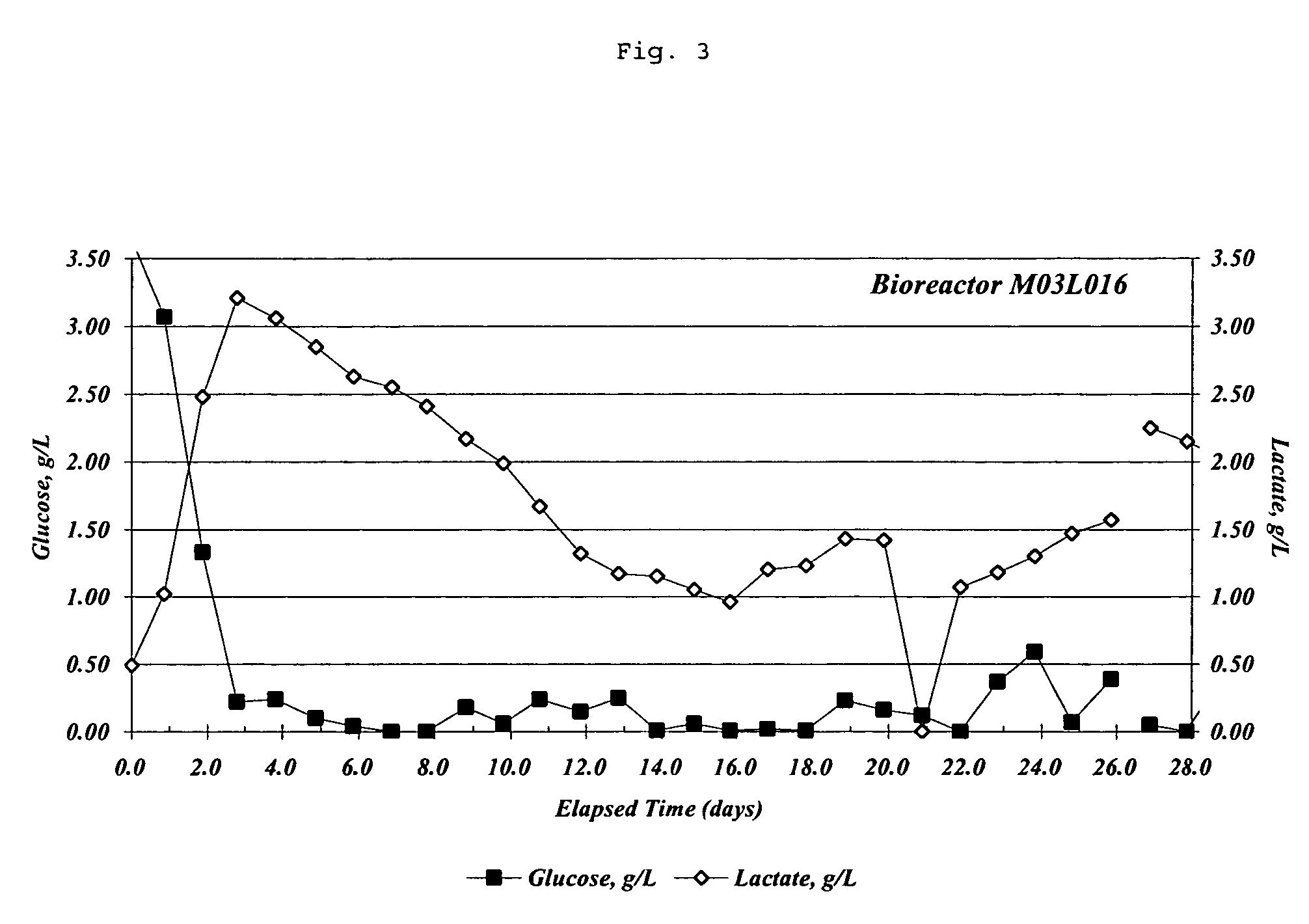Chemically defined media compositions
a composition and chemical technology, applied in the field of chemically defined media compositions, can solve the problems of limiting yield, contamination of conventional eukaryotic cell culture media with “adventitious particles” such as bacteria, viruses or prion particles, and serious potential problems
- Summary
- Abstract
- Description
- Claims
- Application Information
AI Technical Summary
Benefits of technology
Problems solved by technology
Method used
Image
Examples
example 1
Eukaryotic Cell Viability in MET 1.5 Cell Culture Media
[0318]Chemically defined MET 1.5 cell culture media can sustain high cell growth and viability (FIG. 1). To examine viable cell numbers, MET 1.5 media was supplied to 3 L perfusion bioreactors. Bioreactors were then inoculated with C743B cells such that the initial cell density was 3×106 cells / ml of MET 1.5 media. The C743B cell line produces a fully human, anti-IL-12 mAb and is a chemically adapted cell line derived from SP2 / 0 myeloma cells. C743B cells were grown for 29 days in the bioreactor and viable cell densities were monitored. Cell culture media was neutralized with a 0.2 M Na2CO3 (aq) solution for the first 9 days of culture and with 0.2 M Na2CO3, 0.0054 M K2CO3 (aq). Excessive cell density in the bioreactor was prevented by the removed of biomass from the bioreactor; cell removal began on day 15 and was gradually increased until day 26. The bioreactor was perfused with one volume of MET 1.5 media per day. Viable cell ...
example 2
Antibody Titer and Specific Productivity in MET 1.5 Cell Culture Media
[0319]Chemically defined MET 1.5 cell culture media can sustain high monoclonal antibody titers and specific productivity (FIG. 2). Cell culture and bioreactor operation was as described above. Fully human, anti-IL-12 mAb titers (mg / L) were determined by standard nephelometry techniques using a Beckman Array Analyzer. A purified fully human, anti-IL-12 mAb of known concentration was used to generate a standard curve for the determination of mAb titers by nephelometry. Viable cell numbers for calculation of specific productivity were determined as described above. Data presented in Example 1, 2, and 3 are all from the same bioreactor run.
example 3
Decreased Lactate Production in MET 1.5 Cell Culture Media
[0320]Lactate concentrations in MET 1.5 media decrease (FIG. 3) as viable cell density increases (FIG. 1). Cell culture and bioreactor operation was as described above. Lactate concentrations and glucose concentrations in the bioreactor culture media were determined using standard assays. Data presented in Example 1, 2, and 3 are all from the same bioreactor run.
[0321]As FIG. 3 indicates, lactate concentrations in MET 1.5 media gradually decreased until day 16 when biomass removal to decrease total cell density in the bioreactor began. During the same period glucose concentrations remained comparatively constant (FIG. 3). Comparison of FIG. 3 to FIG. 1 reveals that viable C743B cell numbers in the same bioreactor were increasing until day 16. Together this data indicates a decrease in lactate production by C743B cells cultured in MET 1.5 media and more efficient metabolism of D-glucose by cells cultured in MET 1.5 media.
PUM
| Property | Measurement | Unit |
|---|---|---|
| pKa | aaaaa | aaaaa |
| pKa | aaaaa | aaaaa |
| pKa | aaaaa | aaaaa |
Abstract
Description
Claims
Application Information
 Login to View More
Login to View More - R&D
- Intellectual Property
- Life Sciences
- Materials
- Tech Scout
- Unparalleled Data Quality
- Higher Quality Content
- 60% Fewer Hallucinations
Browse by: Latest US Patents, China's latest patents, Technical Efficacy Thesaurus, Application Domain, Technology Topic, Popular Technical Reports.
© 2025 PatSnap. All rights reserved.Legal|Privacy policy|Modern Slavery Act Transparency Statement|Sitemap|About US| Contact US: help@patsnap.com



